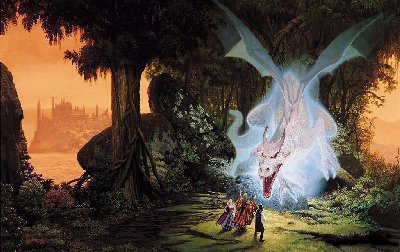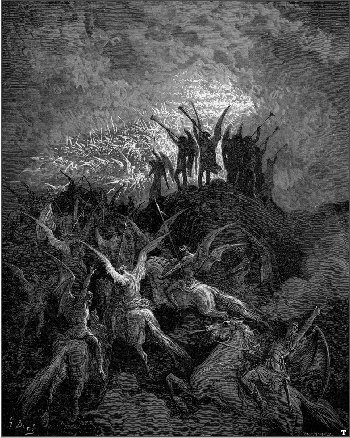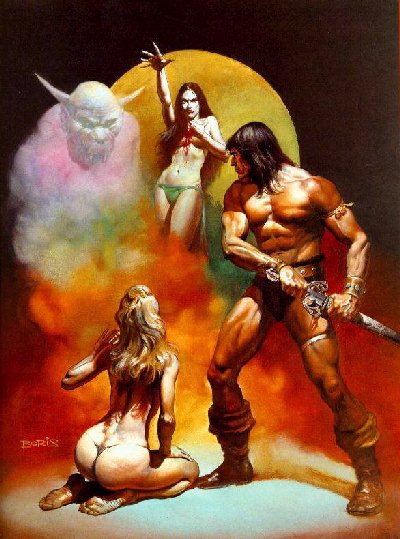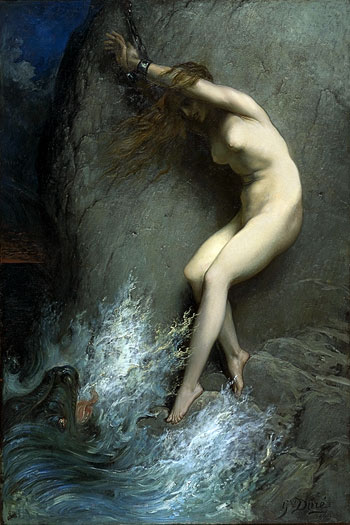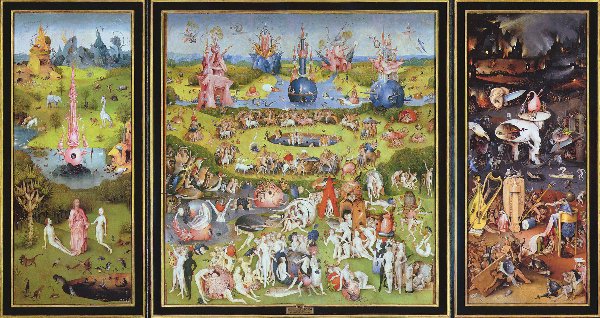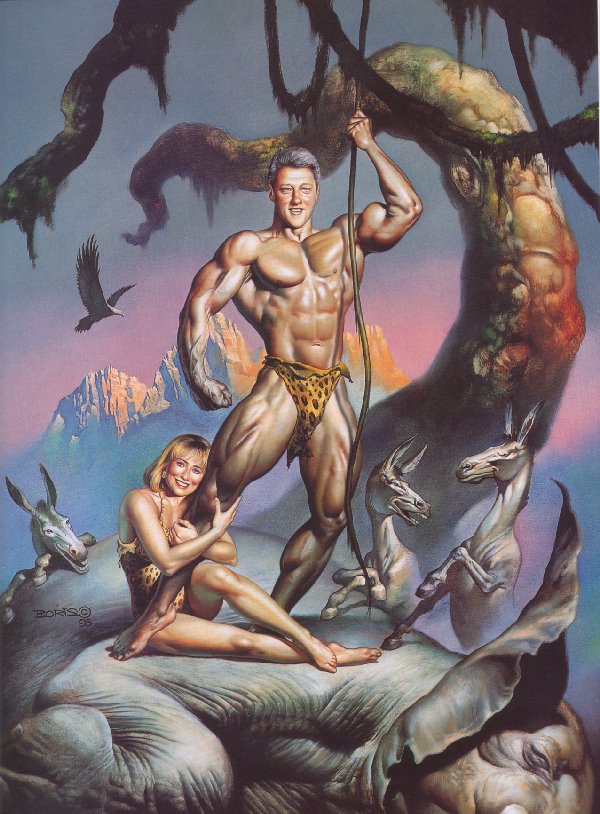| The History of Fantasy Art
The Art History Archive - Fantasy Art
The Enchanting World of Fantasy Art: Characteristics and SignificanceBy Chaz T. G. Patto - May 2023. The Fantasy Art movement has captivated audiences with its imaginative and otherworldly creations. This unique art form transports viewers to realms of magic, mythical creatures, and surreal landscapes. Through this essay, we will explore the characteristics and significance of the Fantasy Art movement, delving into its distinct qualities, artistic techniques, and enduring impact on the art world. Characteristics of Fantasy Art Imagination and Creativity: Fantasy Art is characterized by its boundless imagination and limitless creativity. Artists within this movement conjure up fantastical worlds, creatures, and narratives that defy the constraints of reality. Through their artworks, they tap into the depths of their imagination, often drawing inspiration from folklore, mythology, literature, and dreams. Magical and Surreal Imagery: Fantasy Art often showcases magical and surreal imagery, transporting viewers to enchanted realms. Artists skillfully blend reality with elements of fantasy, creating landscapes inhabited by mythical creatures, fairies, dragons, and otherworldly beings. The artistry lies in the ability to evoke a sense of wonder, transporting viewers beyond the confines of everyday existence. Rich Symbolism and Storytelling: Fantasy Art frequently incorporates rich symbolism and storytelling elements. Artists use symbols, motifs, and visual narratives to convey deeper meanings and explore themes of heroism, transformation, destiny, and the battle between good and evil. The artworks invite viewers to embark on imaginative journeys and interpret their own narratives within the fantastical realms presented. Mastery of Mediums and Techniques: Fantasy Art embraces a wide range of mediums and techniques, showcasing the artists' mastery of their craft. Whether through traditional painting, digital illustration, sculpture, or mixed media, artists employ various techniques to bring their imaginative visions to life. The use of vibrant colors, intricate details, and meticulous craftsmanship are often key elements in creating the immersive and visually stunning worlds of Fantasy Art. Significance of Fantasy Art Escapism and Inspiration: Fantasy Art holds significant cultural significance as a form of escapism and inspiration. In a world often filled with mundane routines and challenges, Fantasy Art offers an avenue for viewers to escape into magical realms, providing a respite from reality. It sparks the imagination, encourages exploration of new possibilities, and stirs the desire for adventure and discovery. Archetypal and Universal Themes: Fantasy Art taps into archetypal and universal themes that resonate with audiences across cultures and generations. The narratives and symbols employed in this art form often draw from collective human experiences, myths, and legends. Through its timeless themes, Fantasy Art connects people, transcending cultural boundaries and offering a shared imaginative experience. Influence on Popular Culture: Fantasy Art has had a profound impact on popular culture, influencing literature, film, gaming, and other forms of entertainment. Artworks and concepts from the Fantasy Art movement have shaped the aesthetics and narratives of fantasy literature, serving as inspiration for writers and storytellers. Additionally, Fantasy Art has been instrumental in shaping the visual landscapes of films, video games, and role-playing games, creating immersive worlds that have captured the imagination of millions. Personal and Emotional Exploration: Fantasy Art provides a platform for personal and emotional exploration. It allows artists and viewers to delve into the realms of dreams, fears, desires, and the subconscious. By immersing themselves in the fantastical worlds depicted, viewers can explore and confront their own emotions, fantasies, and inner journeys. Conclusion: The Fantasy Art movement stands as a testament to the power of imagination, creativity, and the enchantment of the human spirit. Its characteristics, including boundless imagination, magical imagery, rich symbolism, and storytelling, have captivated audiences and transformed the art world. The significance of Fantasy Art lies in its ability to transport viewers to otherworldly realms, provide escapism and inspiration, shape popular culture, and serve as a conduit for personal and emotional exploration. Through the realms of Fantasy Art, we are reminded of the transformative power of the human imagination and its capacity to transport us beyond the confines of our reality. See Also: The Visionaries of Fantasy: Influential Fantasy Artists of the 21st Century
Imagination
|
|||||
|
eBooks by fantasy author Charles Moffat: |
| Get high quality SEO advice for FREE from the SEO experts at designSEO.ca, they are Toronto's Search Engine Optimization foremost SEO experts. Get quality advice for free, hire experts who know SEO better than no other. |
|
|
|
|
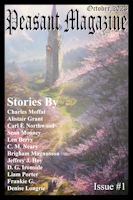 CALL FOR SUBMISSIONS
CALL FOR SUBMISSIONS
Peasant Magazine is looking for fantasy/historical fiction short stories that are between 1,000 and 8,000 words in length. Download a free PDF copy of Issue #1 or buy the 8x11 magazine to get a feel for what Peasant Magazine is all about.
|
Dragon art is also very popular because dragons continue to be popular creatures in literature. Many myths and legends exist about dragons and it’s only natural that artists and writers would try to emulate those myths in books and paintings.
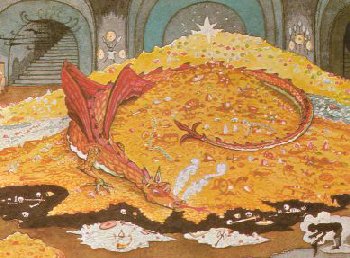
[Right: "Smaug's Lair" is a famous example from Tolkien's book "The Hobbit". Tolkien himself painted the book cover which would later be printed in 1983.]
1930s
In 1923 "Weird Tales" (the first all-fantasy fiction magazine) was created. Many other similar magazines eventually followed, including "Sword and Sorcery". The pulp magazine format was at the height of its popularity at this time and was instrumental in bringing fantasy fiction to a wide audience in both the U.S. and Britain. Such magazines also played a large role in the rise of science fiction and it was at this time the two genres began to be associated with each other.
Prominent authors began their careers in these magazines including Clark Ashton Smith, Fritz Leiber, Ray Bradbury and most noticeably H. P. Lovecraft.
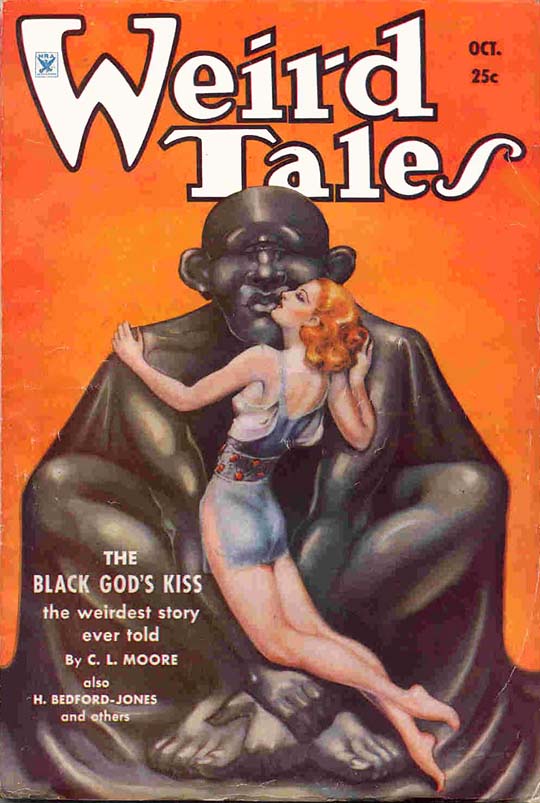
The early works of many "Sword and Sorcery" authors such as Robert E. Howard also began at this time. By 1950 sword and sorcery had found a wide audience, with the success of Howard's Conan the Barbarian, and Fritz Leiber's Fafhrd and the Gray Mouser stories. Howard's works, especially Conan, were to have a noteworthy, even defining, influence on the sword and sorcery sub-genre. They were tales of vivid, larger-than-life action and adventure, and after the work of Tolkien, the most widely read works fo fantasy.
Leiber's stories were particularly noted for their uncommon realism for the time; Unknown developed this trait, with many stories in it showing credibility and realism. Like Morris and Eddison before him, Leiber continued the tradition of drawing on Northern European legend and folklore. C.L. Moore was among Howard's first imitators, with "The Black God's Kiss", in which she introduced Jirel of Joiry and the heroine protagonist to sword and sorcery.
In 1938, with the publication of The Sword in the Stone, T. H. White introduced one of the most notable works of comic fantasy. This strain continued with such writers as L. Sprague de Camp who managed to scrap together Howard's unfinished works and create additional Conan stories by finishing them in true Robert E. Howard fashion.
Note: Many of the stories and books published prior to the 1970s were rife with racism and racial stereotypes. The artwork likewise frequently depicted such racial beliefs and likewise racial tensions.
[Right: Margaret Brundage - The Black God's Kiss - 1934]
1940s
Following the success fantasy pulp fiction magazines writers in the 1950s thru to the 1970s fantasy writers started to lean more towards writing full length novels (sometimes with interior illustrations). The 1950s was an era that saw the rise of science fiction as a marketing juggernaut. UFOs, aliens, communists, government conspiracies were in the collective consciousness of western culture. Science fiction therefore began to dominate the pulp fiction world.
But this didn't mean fantasy was totally ignored. The works of Tolkien (first published in 1937, and in the United States a year later) and Tolkien's colleague C. S. Lewis were main dishes of the fantasy world and artists flocked to the ideas presented in their books. C. S. Lewis published The Chronicles of Narnia between 1950 to 1956. Both writers used fantasy to convey metaphors regarding World War II and the artwork rarely shows this symbolism. In The Chronicles of Narnia for example, the lion Aslan is a symbol of British Royalty, and the wolves represent NAZIs.
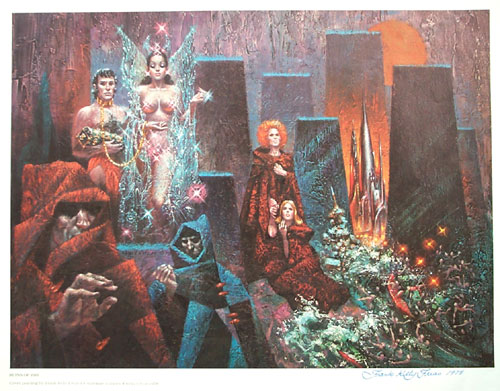
1950s
[Right: Frank Kelly Freas - The Ruins of Isis - 1978]
1960s
In the 1960s a collection of Conan stories were released with new cover art by Frank Frazetta. This series ended up selling approx. 10 million copies and the cover artwork inspired a generation of artists who followed in the 1970s.
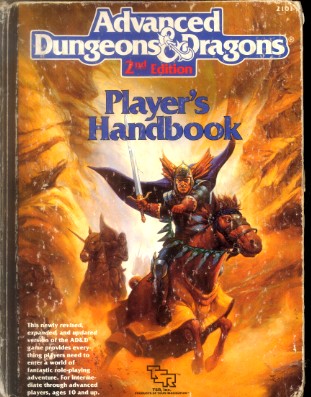
In 1973 Tactical Studies Rules (TSR), a company run by Gary Gygax and Donald Kaye, published a book that would revolutionize the world of fantasy art. But it wasn't fiction per se, it was the fantasy role-playing game "Dungeons & Dragons".
D&D as it is now commonly called would have a phenomenal impact on the popularity of fantasy fiction and the genre as a whole. It was a dice game which used interactive storytelling so that a group of people could create their own fantasy stories and "roleplay" out situations using dice to determine the results of random chance.
The game was intensely addictive and many books, supplements and fictional material would follow as a direct result of the game. Whole fantasy worlds, notably The Forgotten Realms and the Dragonlance world "Krynn", would become the subject of hundreds of over 400 individual novels, each with cover art and interior illustrations. Some of the novels were even adapted into comic books.
The game now has had over 50 million players (past and present) and is even played by celebrities: Comedian Stephen Colbert, musician Moby, and actors Vin Diesel, Matthew Lillard, Mike Myers, Patton Oswalt, Wil Wheaton and Robin Williams have made their D&D hobbies public.
35 years later D&D is now entering its 4th Edition (due out June 2008), has spawned a movie and will likely create more movies. The original Dragonlance trilogy is being considered for Hollywood Blockbusters.
As a franchise D&D has paid the bills for hundreds of fantasy artists during the last 4 decades, allowing them to pursue and expand their artistic goals, and even spawning competing companies. "Sword and Sorcery", the fantasy pulp fiction magazine mentioned above, has long since gone bankrupt and has been replaced by different company with the same name which creates fantasy roleplaying books.
You'll notice that the number of artists listed below jumps dramatically in 1970s and (if you research the individual artists) they tend to specialized specifically in fantasy art (as opposed to many of the artists above who were illustrators or painters for pulp fiction magazines).
A number of Conan and The Lord of the Rings books were reprinted during the 1970s, sparking re-interest in the books.
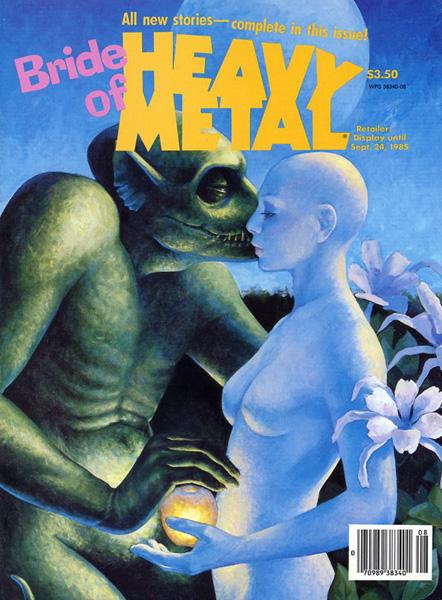
In 1977 there is also an European influence as the French magazine "Métal Hurlant" (Heavy Metal) gets published in the United States for the first time. Heavy Metal would become a popular source of fantasy and science fiction art and a breeding ground for graphic novels. Artists included Enki Bilal, Jean Giraud (also known as Moebius), Phillippe Druillet, Milo Manara and Philippe Caza.
1970s
1980s
In 1993 mathematics professor Richard Garfield created the trading card company "Wizards of the Coast" and patented trading card games, creating such games as Magic: The Gathering, the Pokémon Trading Card Game, the Star Wars Trading Card Game, the Simpsons Trading Card Game and numerous others.
With approx. 6 million players in 70 countries the company eventually became so profitable they bought out TSR. Because the trading cards all have artwork on them, it became another source of employment for fantasy artists.
[Right: Boris Vallejo - Portrait of Bill and Hillary Clinton - 1996]
1990s
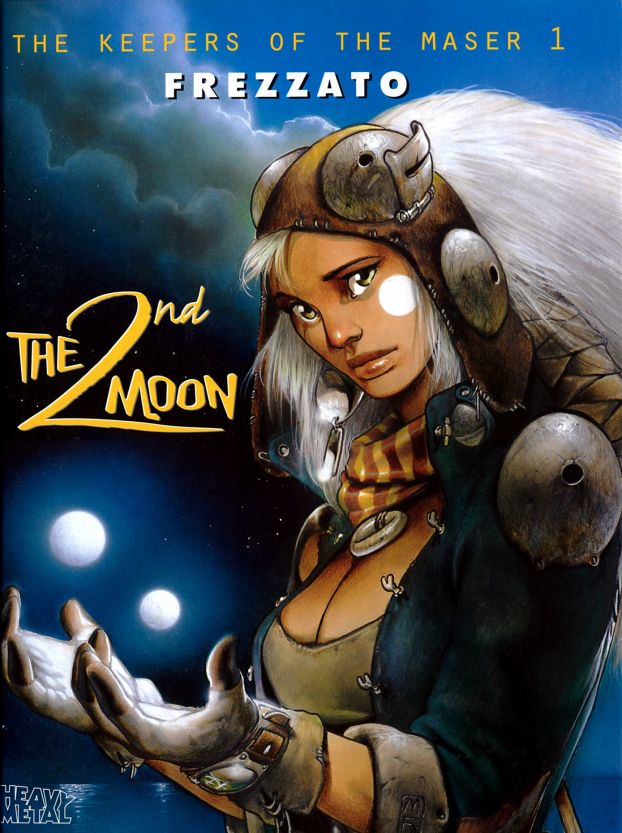
With modern computer graphics the movie business has pumped new life into the fantasy genre. Blockbuster films (often based on popular books) like Dragonheart, The Lord of the Rings, Harry Potter, The Chronicles of Narnia, The Golden Compass, The Pirates of the Caribbean, Star Wars (contrary to popular belief, Star Wars is technically fantasy, not science fiction) and numerous others has created renewed interest in the fantasy genre.
As a result amateur fantasy artists are a dime a dozen these days, many of them showcasing their art on websites like elfwood.com and deviantart.com.
[Right: Massimiliano Frezzato - Keepers of the Maser 1 Frontispiece - 1997]
2000s
